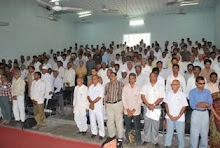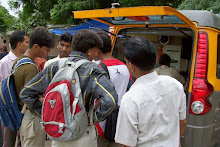Times
of India: New Delhi: Monday, 20 April 2015.
Times School
of Journalism (TSJ), run by The Times of India (TOI) group, is going to adopt a
news management system for training students from the 2015-16 academic year.
The news management and integrated layout software, using the CCI 3.5 platform,
is the same as that being used by TOI, Economic Times and various Mirror
editions, published by Bennett, Coleman & Company Limited (BCCL).
"We will
be functioning like a full-fledged newspaper," says Devlin Roy, DGM
(corporate group) and principal, TSJ, which conducts a full-time postgraduate
diploma course in journalism. The move is meant to strengthen facilities for
handson training. "We are also planning to start our e-zine in association
with the timesofindia.com team," adds Roy.
Focusing on
all media platforms, the institute boasts a core faculty comprising senior
editors from the TOI group as well as other leading media brands; two labs with
computers and internet connections; a projector for film screenings, a studio
for broadcast training and other resources. Students are offered training in
Quark and other page-making soft ware. They carry out fieldwork and bring out
house journals.
"Everybody
who files stories has to design pages as well," says Roy.
According to
him, the institute prefers an assignment-based curriculum to a textbook-based
approach. "For example, if there is a building collapse in the vicinity,
our students will go and cover the accident. They will file the story in real
time, just like the reporters in newspapers TV channels websites. The teachers
will give their feedback on the stories and, while doing so, introduce
important concepts in reporting like sourcing of a story or how to interview
people, etc," he elaborates. "Similarly, in a session on, say RTI,
the teacher will actually ask the students to file RTI applications and write
stories based on the response."
Shweta
Krishnan, a 2012 alumnus, stresses the importance of field training for budding
journalists. "The stories we used to do would be published under the Times
News Network," says Krishnan, who interned in two newspapers and a
magazine before moving into public relations. Moreover, she adds, being taught
by working professionals is different because they could "talk to us about
what they do and how it's done. They could share what they did the day before.
So, the information is not redundant."














































































